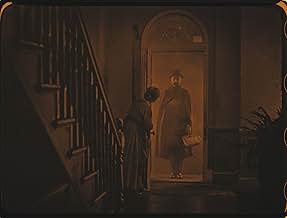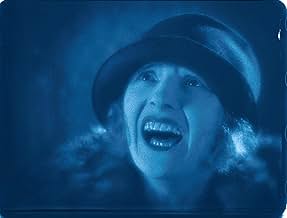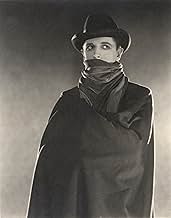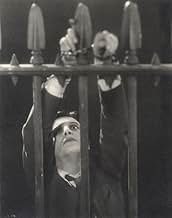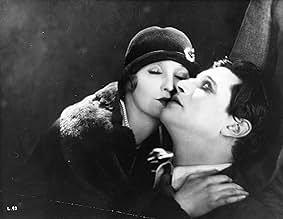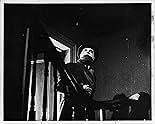ÉVALUATION IMDb
7,3/10
14 k
MA NOTE
Une femme soupçonne que son nouveau locataire est le psychopathe qui tue des femmes à Londres.Une femme soupçonne que son nouveau locataire est le psychopathe qui tue des femmes à Londres.Une femme soupçonne que son nouveau locataire est le psychopathe qui tue des femmes à Londres.
June Tripp
- Daisy - A Mannequin
- (as June)
Wallace Bosco
- Pub Customer
- (uncredited)
Daisy Campbell
- Mother
- (uncredited)
Maudie Dunham
- First Victim
- (uncredited)
Reginald Gardiner
- Dancer at Ball
- (uncredited)
Eve Gray
- Showgirl Victim
- (uncredited)
Alfred Hitchcock
- Extra in Newspaper Office
- (uncredited)
Alma Reville
- Woman Listening to Wireless
- (uncredited)
Histoire
Le saviez-vous
- AnecdotesFor the opening of this movie, Sir Alfred Hitchcock wanted to show the Avenger's murder victim being dragged out of the Thames River at night with the Charing Cross Bridge in the background, but Scotland Yard refused his request to film at the bridge. Hitchcock repeated his request several times, until Scotland Yard notified him that they would "look the other way" if he could do the filming in one night. Hitchcock quickly sent his cameras and actors out to Charing Cross Bridge to film the scene, but when the rushes came back from the developers, the scene at the bridge was nowhere to be found. Hitchcock and his assistants searched through the prints, but could not find it. Finally, Hitchcock discovered that his cameraman had forgotten to put the lens on the camera before filming the night scene.
- GaffesWhen The Lodger (Ivor Novello) and Daisy (June Tripp) are playing chess, but the board is set up inappropriately. The square in the right corner should always be white. In this case, the bottom-right square is dark (black). This is the most obvious when The Lodger (Ivor Novello) is poking the coals in the fireplace.
- Générique farfeluClosing credits: Thank you to everyone who supported the BFI's Silent Hitchcock restoration project.
- Autres versionsThe original version of The Lodger directed by Alfred Hitchcock in 1926 was restored in 1999 in honor of the directors 100th anniversary. The film was restored by the British National Film & TV Archives and a new score by Ashley Irwin was commissioned by ZDF/ARTE (Germany) and premiered on August 13, 1999 (what would have been Hitchcock's 100th birthday).
- ConnexionsEdited into Histoire(s) du cinéma: Une vague nouvelle (1999)
Commentaire en vedette
The Lodger was the feature which Hitchcock himself described as his first true film (it was actually his third complete one), and film historians, particularly auteurists tend to focus upon it because it is it introduces themes of murder and suspense that Hitch's name would later be synonymous with.
To be honest, the first thing that strikes me upon watching The Lodger is its sense of rhythm. Hitchcock's earliest films were always very rhythmic and the opening moments of The Lodger are a great example, with a dynamic and attention grabbing sequence of shots and title cards. Much of this however may be down to the style of the seldom referenced screenwriter Eliot Stannard, who has a credit on all but one of Hitchcock's silents. Stannard was a master at telling stories in purely visual terms, and his screenplays often go as far as to map out series of interlocking images.
The next very obvious thing about The Lodger is that right from the start Hitchcock was more interested in cinematic technique than he was in performances or artistry. The Lodger is crammed with Expressionist effects, in particular double exposures. Hitch clearly hadn't learnt the art of subtlety yet and these are massively overused. We can also tell early on that Hitchcock was interested in using his camera to involve the audience in the film, throwing in point-of-view shots or drawing our attention to specific items. In this regard his technique was not yet refined. He was develop it in his later silents.
Of course what generally interests followers of Hitchcock's career is the fact that The Lodger is the first time he deals with the grisly subject of murder. It's true that there are many Hitchcockian elements here murder, blondes, a love triangle and even a MacGuffin in the form of the Avenger whom all the characters are concerned about but isn't the focus of the story. There is a kind of morbid sensationalism concerning the killings, something we'd see right through to the other end of Hitch's career with the comment about "ripped whores" in 1972's Frenzy. There's also of course a "wrong man", although here he appears more as the subject of a whodunit. The later Hitchcock would have focused upon the plight of the wrongly accused, and made a more suspenseful film in the process.
All in all, The Lodger isn't really as significant an early Hitchcock as some would believe. For one thing there is the influence of screenwriter Stannard and the fact that Hitchcock, although he may have relished the material, was still very young and inexperienced. The fact is The Lodger may contain more of Stannard's influence than it does Hitchcock's. It's not as if Hitchcock immediately began making more murder thrillers. The majority of his British thrillers are of the espionage/adventure variety, and it would take up until the early 40s for Hitchcock to really begin making masterpieces in the domestic murder genre. It's also nowhere near being Hitch's best silent film, even though it tends to be remembered over more polished works like The Ring and The Manxman. Taken out of context though, it is a fairly decent late silent thriller, with only a few minor flaws in plot and direction.
To be honest, the first thing that strikes me upon watching The Lodger is its sense of rhythm. Hitchcock's earliest films were always very rhythmic and the opening moments of The Lodger are a great example, with a dynamic and attention grabbing sequence of shots and title cards. Much of this however may be down to the style of the seldom referenced screenwriter Eliot Stannard, who has a credit on all but one of Hitchcock's silents. Stannard was a master at telling stories in purely visual terms, and his screenplays often go as far as to map out series of interlocking images.
The next very obvious thing about The Lodger is that right from the start Hitchcock was more interested in cinematic technique than he was in performances or artistry. The Lodger is crammed with Expressionist effects, in particular double exposures. Hitch clearly hadn't learnt the art of subtlety yet and these are massively overused. We can also tell early on that Hitchcock was interested in using his camera to involve the audience in the film, throwing in point-of-view shots or drawing our attention to specific items. In this regard his technique was not yet refined. He was develop it in his later silents.
Of course what generally interests followers of Hitchcock's career is the fact that The Lodger is the first time he deals with the grisly subject of murder. It's true that there are many Hitchcockian elements here murder, blondes, a love triangle and even a MacGuffin in the form of the Avenger whom all the characters are concerned about but isn't the focus of the story. There is a kind of morbid sensationalism concerning the killings, something we'd see right through to the other end of Hitch's career with the comment about "ripped whores" in 1972's Frenzy. There's also of course a "wrong man", although here he appears more as the subject of a whodunit. The later Hitchcock would have focused upon the plight of the wrongly accused, and made a more suspenseful film in the process.
All in all, The Lodger isn't really as significant an early Hitchcock as some would believe. For one thing there is the influence of screenwriter Stannard and the fact that Hitchcock, although he may have relished the material, was still very young and inexperienced. The fact is The Lodger may contain more of Stannard's influence than it does Hitchcock's. It's not as if Hitchcock immediately began making more murder thrillers. The majority of his British thrillers are of the espionage/adventure variety, and it would take up until the early 40s for Hitchcock to really begin making masterpieces in the domestic murder genre. It's also nowhere near being Hitch's best silent film, even though it tends to be remembered over more polished works like The Ring and The Manxman. Taken out of context though, it is a fairly decent late silent thriller, with only a few minor flaws in plot and direction.
- Steffi_P
- 8 nov. 2007
- Lien permanent
Meilleurs choix
Connectez-vous pour évaluer et surveiller les recommandations personnalisées
Détails
Box-office
- Budget
- 12 000 £ (estimation)
- Brut – à l'échelle mondiale
- 83 568 $ US
- Durée1 heure 32 minutes
- Couleur
- Mixage
- Rapport de forme
- 1.33 : 1
Contribuer à cette page
Suggérer une modification ou ajouter du contenu manquant

Lacune principale
By what name was Les cheveux d'or (1927) officially released in India in English?
Répondre


